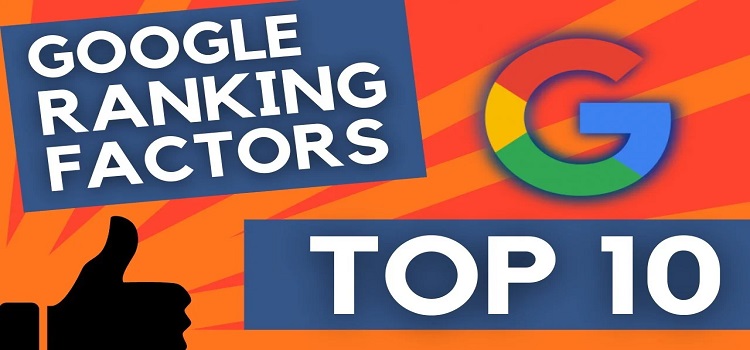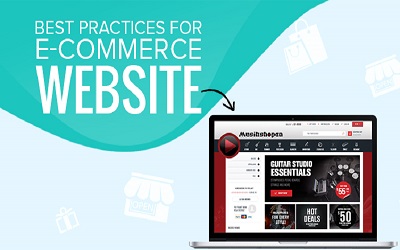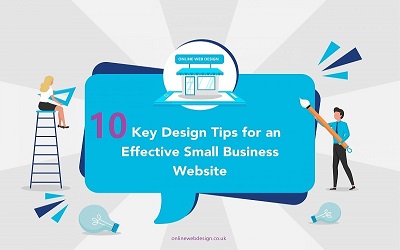
-
HOW DO YOUR CUSTOMERS FIND YOU?
For modern-day businesses, the answer is simple: they go online. In particular, they go on search engines like Google.
While paid search ads are a great way to gain immediate exposure on this go-to search engine, you should also be working to build up your organic rankings as well. With a strong presence in both paid and organic search engine results, you can increase your visibility—and no matter what kind of business you run, having visibility on search engines is critical if you want to attract customers and drive revenue results.
-
1. SITE AND PAGE SPEED
Nobody likes a website that takes forever to load, and if you could ask search engines what they think, they would agree. That’s why having a website that loads quickly and seamlessly is a core component of technical SEO.
If your pages are taking too long to load, you’re likely going to see your bounce rate skyrocket, which will hurt your ranking. Users expect a pain-free browsing experience, which is why page speed is an important ranking factor. Always keep this in mind when auditing your site for SEO improvements.
There are many tools available on the market that allow you to test your website speed. I recommend checking out GTmetrix or Google Page Speed Insights. These tools are free, simple, and provide valuable insights about site speed that allow for easy optimizations. -
2. USABILITY ON MOBILE
Google uses mobile-first indexing when crawling websites. This means that the search engine predominantly uses the mobile version of a website when it's evaluating a page.
Even if the desktop version of your site is flawless, your search engine ranking could take a huge hit if the site isn’t optimized for mobile. Always preview your web pages to ensure that they’re easily accessible across different types of devices, not just desktop.
Most content management systems have built-in features that allow you to do this before you hit the publish button. Additionally, you can use a free mobile usability testing tool such as Google’s Mobile-Friendly Test that will provide you with similar insights. -
3. INTERNAL LINK
As mentioned earlier, search engines work by crawling and indexing different pieces of content on your website. The crawlers use internal links as a signal that helps them to analyze and properly index this information.
The term “internal links” refers to any hyperlink that points to an internal page within your website.
The more organized and tightly-knit your internal linking structure is, the easier it is for search engines (and users) to find what they’re looking for.
To do this, you must be mindful of what pages you’re linking to each time you create a new page or a new piece of content.
One popular method for keeping your internal links organized is by creating topic clusters. The idea is simple: you create content around a specific umbrella “pillar” topic and keep your interlinking within this cluster.
-
4. KEYWORD TARGETING
Keywords are at the center of an effective SEO strategy. These are the search terms that people use when they go on a search engine to find what they’re looking for. Before you can start creating content for your website, it’s critical to conduct keyword research.
In a recent survey conducted by Directive, 78% of marketers identified keyword research as a high-impact practice for driving new traffic. The research process allows you to better understand what your audience is searching for and create content that directly addresses these search queries.
-
5. TITLE AND HEADER TAGS
Once you know which keywords you want to rank for, it’s important to insert them into specific places on your page, like the title and header tags. Search engines use these tags to learn what the page is about and index it appropriately.
The title tag is what’s displayed the most prominently in the search results pages (see below).
-
6. Meta description
The meta description is a short description that lives in the HTML code of your web page. Although it doesn’t appear on the page itself, it’s displayed in search results. In the image below, you can see the meta description that appears in light gray text.
-
Although the meta description is not a major ranking factor, Google will sometimes use it to pull a featured results snippet. Plus, it gives searchers more information about the page, which can increase click rate. For this reason, it’s still important to include the meta description as part of your SEO checklist and make sure it accurately summarizes the content on the page.
-
7. IMAGE alt-text
If you’ve ever searched for anything on Google Images, you can probably guess that there’s an SEO component to images as well. Every image on your website comes with alt-text, also referred to as an alt-tag.
-
8. URL STRUCTURE
It may seem simple, but the way you structure your page URLs does have some impact on your search engine ranking. A jumbled URL with many mixed characters doesn’t do a good job of helping search engines learn about the page.
On the other hand, a URL that follows a simple structure, is concise, and incorporates the target keyword — now that’s an SEO-friendly URL.
-
Poorly Structured URL: www.website.com/us/.php.?id=03736&edit=1
Properly Structured URL: www.website.com/blog/google-ranking-factors -
9. Information quality
Unless it's completely evergreen, most content loses its value over time. Let’s face it, your “top tips of 2018" just aren’t cutting it for your audience anymore. We know that Google search trends change over time. The terms that your audience used to find your content could’ve easily changed since the time that older piece was created. We also know that Google values freshness as well as accuracy and relevancy when determining rankings. If your website has been around for a while, there’s a good chance there’s a lot of old and underperforming content that’s just sitting there.
Start with the pieces that used to perform well and update them for keywords that are relevant today. Some articles may need to be fully rewritten, while others may just need updated data to bring them back to life. As you update these posts, incorporate them into your regular content cadence by republishing them with the new publication date.
Off-page Google ranking factors
Off-page ranking factors have to do with entities outside of your website, such as social media platforms, influencers, and other websites, but there is one focal point to any off-page SEO strategy:
-
10. BACKLINKS
A backlink is a hyperlink that comes from a page outside of your website. Google launched its game-changing PageRank algorithm update back in 1996, which made clear that the number and quality of links to a page would be a strong indicator of the quality of a web page, and more than two decades later, it still is.
- Top 10 Google Ranking Factors
Written By Adam: adam@onlinewebdesign.co.uk

Best Practice For eCommerce Website
Your eCommerce store is incomplete till it can find a way to retain and engage visitors. To accomplish this, merchants might want to create an aesthetic and easy-to-navigate eCommerce website. If your online store can ease the buying process, you’ll stand to receive a tremendous increase in revenue.
Learn More
Why you need an SSL certificate
Websites need SSL certificates to keep user data secure, verify ownership of the website, prevent attackers from creating a fake version of the site, and convey trust to users.
Learn More
360 Degree Marketing
Most people have heard of 360 degree marketing in passing yet do not fully understand this unique approach to converting prospects into paying customers.
Learn More
10 Factors Small Website Must Have
A small business website design should be simple yet captivating. Too much information or a complicated design can overwhelm the viewer.
Learn More
Web Design To Boost Up Revenue
A good web design is one of the vital factors to increase your sales and traffic swiftly. Every feature of your business website counts in providing a seamless experience to the users.
Learn More
Improve With Google
Google has become a part of almost every individual's life in different forms and for different purposes. When it comes to managing and marketing of businesses.
Learn More
Website Speed Optimization
In business, speed is imperative, whether it’s getting your product to the market or reaching your customer before your competitor does. This rule of speed applies to your website’s loading time too.
Learn More